This week, my goal was to understand note values–learning how long each note is held when playing music. I also wanted to learn how to count them, and how to draw them correctly on a music staff.
Tools
- To help me learn and practice, I used a few different digital platforms
What I learned
On Music4Kids Youtube channel “Learn about Note Values in Music”. I was taught this basic information:
- What is a Note Value?
- A note value indicates the length of a note. Meaning how long you hold the notes for.
- Each note has three parts. The note head, the stem, and the flag. Each of these parts can tell you the note value.
- The first note I learned is the Quarter Note. The note head is filled in, and there is no flag at the top of the stem.
- The note value of a quarter note is 1 beat in a measure


- A Measure is a short phrase in a music piece. The top number of a time signature is, in this case is 4, is how many beats are in a measure. The bottom number, in this case is also 4, tells you the type of note that gets one beat.
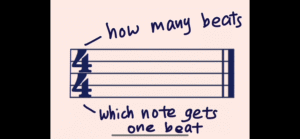
- The Eighth Note looks like a quarter note, however, it has one flag at the top of the stem. Each flag on a stem means it’s half the notes long.
- The note value of it is with the time signature is 1/2 a beat
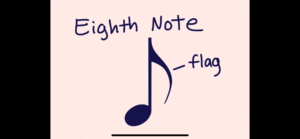

- The note value of it is with the time signature is 1/2 a beat
- The Sixteenth Note with two flags, would be half as long as the eighth note. This can keep going in notes, and the notes can become very short in value.
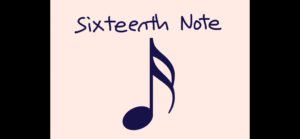
- The Half Note looks like a quarter note, but the note head has space in the middle.
- In the time signature of 4/4 the note value of a half note is 2 beats.
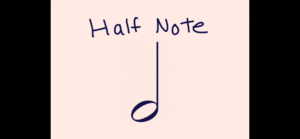
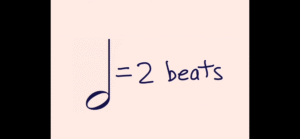
- In the time signature of 4/4 the note value of a half note is 2 beats.
- The Whole Note looks similar to a half note, however, it has no stem.
- In a time signature of 4/4, the note value of a whole note is 4 beats. It takes up the entire measure.
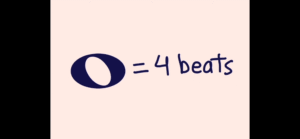
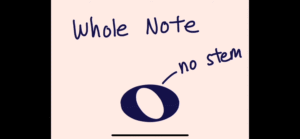
- In a time signature of 4/4, the note value of a whole note is 4 beats. It takes up the entire measure.
I learned that these notes create the rhythm of the song, kind of like a heartbeat of music. Each type of note has a different shape, which helps you know how long to hold it.
To learn/practice writing these note values on a measure. I went onto Pinterest and sound a simple song I could practice drawing. In this case I practiced Mary Had a Little Lamb written by Gilbert DeBenedetti.
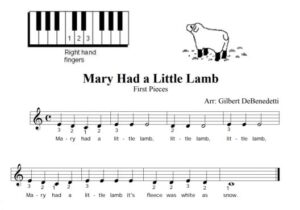
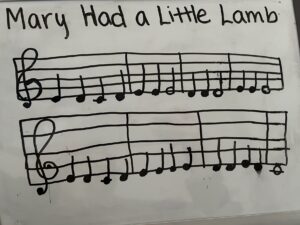
What helped me understand their shapes better was practicing this technique:
- Whole notes are just open ovals with no stem
- Half notes are open ovals with a stem
- Quarter notes are filled-in ovals with a stem
Reflection:
This week helped me better understand how rhythm works in music. I used to think all notes were just symbols, but now I know that each one tells me how long to play a sound. Using these free beginner friendly tools online made this easier to learn at my own pace. I still need more practice counting out loud and drawing from my memory, but I’m proud of how far I’ve come in a few weeks. If anyone is wanting to learn note values I suggest my tools provided above. I watched a couple other videos that were not making much sense, Music4Kids Youtube channel is an awesome channel that is great for all ages that helped me understand in a simple manner. Pinterest also has hundreds of easy sheet music to practice off. Not only for sheet music, but for almost anything you want to learn on the interest.
Next Week:
Next week, I want to explore time signatures and how they affect the way we count music. I also hope to try clapping rhythms along with a metronome to build my timing. I would love any suggestions of any platforms if you have benefited from any in your past learning journeys!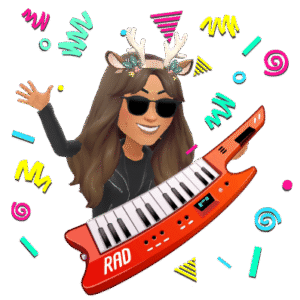
Thank you for following along!

Hi Kadie,
Your blog post really took me back to elementary school when I was in band class trying to learn the difference between notes. I think Pinterest is great for anyone wanting to try something new. It has just about everything on there for beginners to advanced learners.
Thanks for sharing,
Ellie